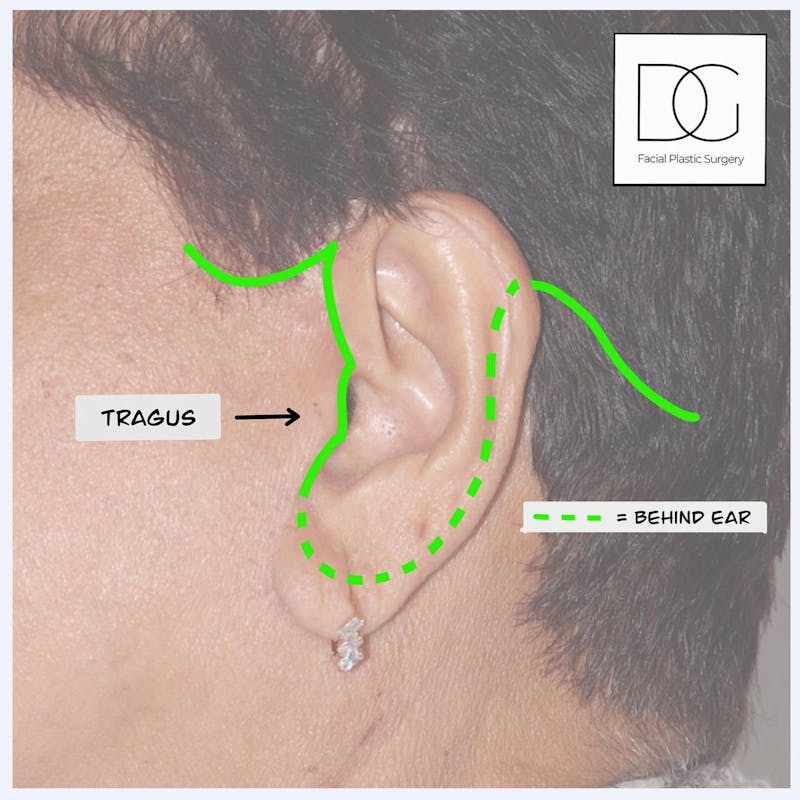
When discussing facelift surgery with prospective clients, I'm often asked about where the incisions are placed and how noticeable they will be once healed. As highlighted in the diagram, my incision follows the natural border of the ear in the front and then wraps behind the ear and terminates in the hair-bearing scalp.
In front of the ear, I prefer a "retro-tragal" incision. This means that the final incision is concealed behind the tragus, the small, triangular appendage of soft tissue that sits in front of the ear canal. I find that placing the incision behind the tragus offers a more camouflaged scar in the long term.
The other key to well-concealed facelift scars is creating a tension-free closure. This is arguably more important than the actual placement of the incisions. One of the many benefits of the deep-plane facelift approach (besides how powerful and long-lasting a lift it provides) is that there is no tension placed on the skin. This means that when the incisions are healing, the scar stays pencil thin.
The patient shown in these images is one of my patients, 6 months after her deep-plane facelift. Even with no makeup on and the image magnified, her scars are practically invisible. This day and age, no one wants to bear the mark of having undergone surgery. With this innovative procedure, my patients experience profoundly natural results with very little evidence they had anything done. It's simply a win-win!
To schedule a facelift consultation in Menlo Park, Palo Alto or San Mateo, please contact us.


